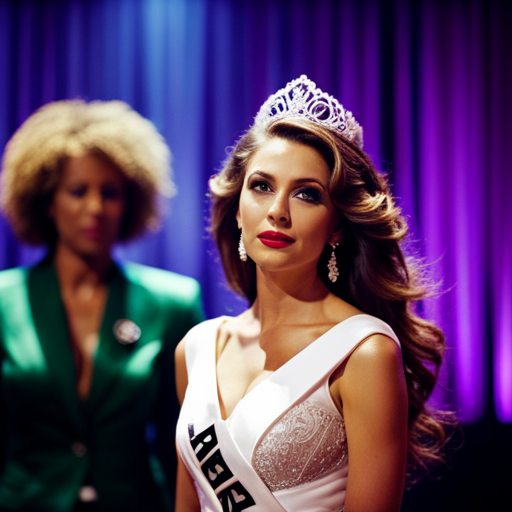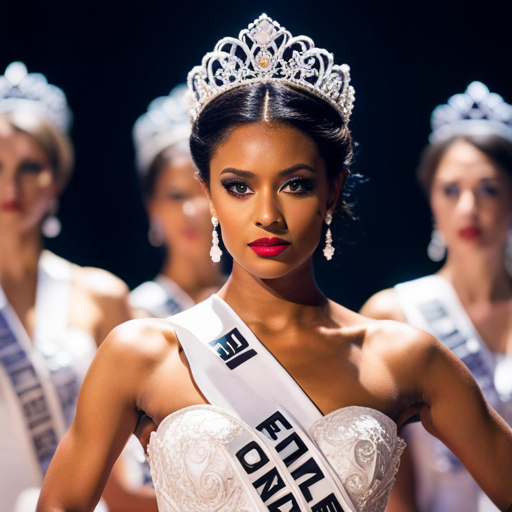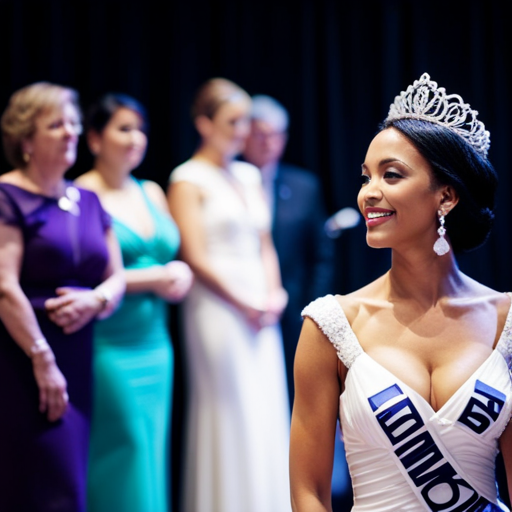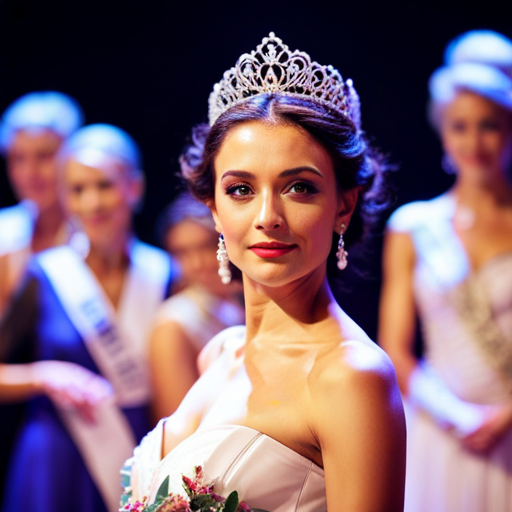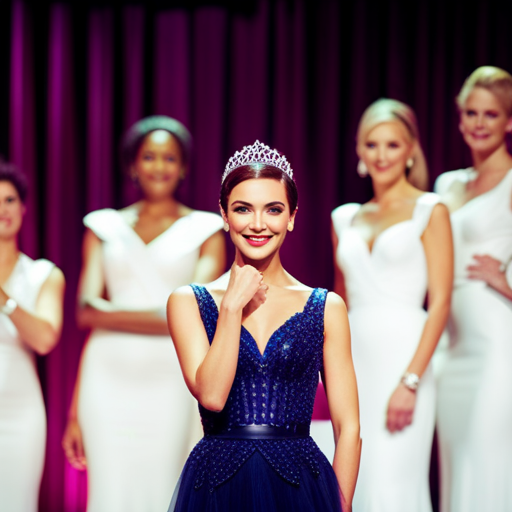Crafting Winning Answers: Pageant Q&A Strategies

How do pageant contestants effectively navigate the high-stakes world of Q&A sessions?
In ‘Crafting Winning Answers: Pageant Q&A Strategies,’ we explore the essential techniques for delivering poised, articulate responses that leave a lasting impression on judges.
From understanding their expectations to mastering body language and handling unexpected curveballs, this article provides a comprehensive guide for aspiring pageant contenders.
Elevate your communication skills and personal brand as we delve into the art of winning answers.
Understanding the Judges’ Expectations
Understanding the judges’ expectations is crucial for success in the pageant Q&A segment. To excel in this aspect, it is essential to comprehend the judging criteria, which often includes evaluating effective communication and message delivery. Judges seek articulate, poised, and confident contestants who can communicate their thoughts coherently and persuasively. It is imperative to understand the nuances of effective communication, such as maintaining eye contact, using appropriate body language, and speaking with clarity and conviction.
Contestants should focus on delivering their messages in a concise yet impactful manner, ensuring that their responses are relevant to the question at hand. Additionally, understanding the specific priorities and values of the judging panel can provide valuable insights into tailoring responses to resonate with their perspectives.
Developing a Strong Personal Brand
In today’s competitive pageant world, developing a strong personal brand is essential for contestants aiming to make a lasting impression.
By focusing on authenticity, individuals can effectively communicate their unique qualities and values, setting themselves apart from the competition.
Understanding the impact of personal branding can empower contestants to showcase their strengths and connect with judges and audiences in a meaningful way.
Branding Through Authenticity
Crafting a strong personal brand involves consistently conveying authenticity across all platforms and interactions. Authenticity is essential in shaping public perception and personal image. It’s about representing oneself genuinely and transparently, aligning words with actions.
When developing a personal brand, it’s crucial to ensure that the image projected is a true reflection of oneself. This involves being genuine, honest, and transparent in all interactions, whether in person or online. Authenticity builds trust and credibility, allowing individuals to connect with their audience on a deeper level.
It’s important to remember that personal branding is not about creating a façade but about showcasing the real and unique aspects of oneself. By embracing authenticity, individuals can create a personal brand that resonates with others and leaves a lasting impression.
Impact of Personal Branding
The impact of personal branding on developing a strong personal brand is crucial in shaping public perception and personal image. Personal branding encompasses the deliberate effort to craft a unique and memorable impression on others, influencing how individuals are perceived by the public. It involves the strategic communication of one’s values, strengths, and personality traits to create a distinct and favorable personal image.
By effectively managing personal branding, individuals can shape public perception, establish credibility, and differentiate themselves from others in a competitive landscape. A strong personal brand can lead to increased opportunities, trust, and influence, both in personal and professional spheres.
It is essential to consistently uphold and reinforce the elements of personal branding to ensure a positive and impactful public perception.
Mastering the Art of Concise Communication
Mastering concise communication is essential for achieving success in pageant Q&A sessions. In the high-stakes environment of pageantry, verbal precision and effective delivery are paramount. To excel in this area, contestants must strive for message clarity and impactful brevity.
Here are five key strategies for mastering the art of concise communication:
-
Eliminate Fillers: Avoid using unnecessary words such as ‘um,’ ‘uh,’ or ‘like’ to maintain a smooth and polished delivery.
-
Structural Organization: Arrange thoughts coherently to convey ideas in a logical and structured manner, facilitating understanding for the audience and judges.
-
Powerful Vocabulary: Use impactful and precise language to express thoughts clearly and assertively, leaving a lasting impression.
-
Active Listening: Engage in active listening to comprehend questions fully, enabling concise and relevant responses.
-
Practice, Practice, Practice: Hone the skill of concise communication through consistent practice, refining delivery and message effectiveness.
Navigating Controversial Topics With Grace
With deliberate finesse, pageant contestants must adeptly navigate controversial topics to convey grace and poise in their responses. Graceful responses to hot button issues require thoughtful diplomacy strategies that reflect a deep understanding of the topic and respect for differing viewpoints. Here are some essential strategies for handling controversial topics with grace:
| Diplomacy Strategies | Examples | Explanation |
|---|---|---|
| Active Listening | Nodding, maintaining eye contact | By actively listening to the concerns of others, contestants show respect for differing opinions and create a platform for constructive dialogue. |
| Empathetic Language | "I understand how some may feel that way, but…" | Using empathetic language acknowledges the validity of differing perspectives and helps to bridge the gap between opposing viewpoints. |
| Neutral Tone | Calm and composed delivery | Maintaining a neutral tone helps to convey a sense of impartiality and fairness, which is crucial when discussing controversial issues. |
| Bridge-Building Statements | "While we may not all agree, it’s important to find common ground…" | Bridge-building statements emphasize the importance of finding common ground and working towards unity, even in the face of disagreement. |
Harnessing the Power of Body Language
When it comes to pageant Q&A strategies, harnessing the power of body language can make a significant impact. Confidence in posture, alignment of gestures with speech, eye contact, and poise are crucial elements to consider.
These aspects can greatly enhance the delivery of answers and leave a lasting impression on the judges.
Confidence in Posture
One must exude confidence through their posture to effectively harness the power of body language in pageant Q&A scenarios. Confidence building and posture tips are crucial elements in projecting a poised and self-assured image. Here are essential strategies to enhance posture for confident body language:
- Stand tall with shoulders back to convey authority and assurance.
- Maintain eye contact to establish a strong connection with the audience and judges.
- Avoid fidgeting or swaying, as it can indicate nervousness or lack of confidence.
- Use open gestures to appear approachable and engaged with the conversation.
- Practice power posing to boost self-confidence and project a commanding presence on stage.
By mastering these posture techniques, contestants can exude confidence and leave a lasting impression during the pageant Q&A.
Transitioning into the subsequent section, the alignment of gestures with speech further amplifies the impact of body language in communication.
Gesture Alignment With Speech
The alignment of gestures with speech plays a pivotal role in conveying confidence and conviction during pageant Q&A scenarios, emphasizing the importance of nonverbal communication in making a lasting impression. Body language is a powerful tool in public speaking techniques, as it can either reinforce or detract from the verbal message being conveyed. To effectively harness the power of body language, it is essential for pageant contestants to ensure that their gestures align with their spoken words. This alignment creates a sense of congruence, projecting authenticity and sincerity to the audience and judges. The table below provides examples of effective gesture alignment with speech, illustrating how specific hand movements can enhance verbal communication and overall stage presence.
| Verbal Message | Gesture | Impact on Audience |
|---|---|---|
| Expressing confidence | Open, expansive gestures | Conveys assurance |
| Emphasizing a point | Pointing or chopping motion | Adds emphasis |
| Showing gratitude | Hand over heart gesture | Demonstrates sincerity |
| Expressing humility | Open palms and slight bow | Portrays humility |
Eye Contact and Poise
Eye contact and poise are essential elements in harnessing the power of body language, contributing to a compelling and persuasive stage presence. When it comes to mastering the art of eye contact and poise, it’s important to remember a few key strategies:
- Maintain steady eye contact with the audience to exude confidence and connect on a deeper level.
- Use poise to convey grace and elegance, enhancing the overall delivery of your message.
- Employ subtle gestures to complement your poise, emphasizing key points with finesse.
- Project confidence through your body language, showcasing your inner strength and conviction.
- Practice controlled movements to exude grace and sophistication, leaving a lasting impression on the audience.
Handling Unexpected Questions With Composure
With grace and poise, pageant contestants must navigate through unexpected questions, maintaining composure and delivering articulate responses.
Handling unexpected questions with composure requires quick thinking and a composed delivery. When faced with an unexpected question, it’s important for contestants to remain calm and collected. They should take a brief moment to gather their thoughts before responding, ensuring that their answer is well-structured and coherent.
Maintaining eye contact with the interviewer and the audience can also help convey confidence and composure, even in the face of unexpected inquiries. Additionally, active listening is crucial in this situation, as it allows contestants to fully grasp the question and provide a relevant, thoughtful response.
It’s essential for contestants to remember that it’s okay to take a brief pause to gather their thoughts before answering. This composed approach demonstrates their ability to handle pressure and think on their feet, leaving a lasting impression of grace and confidence on the judges and the audience.
Frequently Asked Questions
What Are Some Common Mistakes Contestants Make During the Q&A Portion of a Pageant?
Contestants often make the mistake of rambling during the Q&A portion of a pageant, losing focus and clarity. Staying concise is crucial to effectively conveying their message and making a strong impression on the judges.
How Can Contestants Effectively Showcase Their Unique Personality and Values During the Q&A Portion?
During the Q&A portion, contestants can effectively showcase their unique personality and values by embracing authenticity, expressing personal values, and demonstrating strong communication skills. This allows them to stand out and connect with the audience.
What Are Some Tips for Maintaining Confidence and Composure During the Intense Pressure of the Q&A Portion?
Maintaining composure and building confidence during the intense pressure of the Q&A portion is crucial for contestants. Deep breathing, positive self-talk, and practicing active listening can help manage nerves and convey a poised demeanor.
How Can Contestants Effectively Address Sensitive or Controversial Topics With Grace and Diplomacy?
In navigating sensitive or controversial topics, contestants must demonstrate grace and diplomacy. Addressing these issues with tact can be challenging, but with careful preparation and empathy, they can effectively convey their perspective while respecting differing viewpoints.
What Are Some Strategies for Connecting With the Judges and Conveying Authenticity During the Q&A Portion?
In order to effectively connect with judges and convey authenticity during the Q&A portion, contestants should focus on building rapport through genuine expression. Maintaining eye contact, speaking from the heart, and showcasing their unique personality can leave a lasting impression.
Conclusion
In the world of pageantry, contestants must navigate a complex web of expectations, personal branding, communication, and composure.
Crafting winning answers requires a deep understanding of judges’ expectations, a strong personal brand, mastery of concise communication, graceful navigation of controversial topics, and harnessing the power of body language.
By honing these skills, pageant contestants can confidently handle unexpected questions with grace, ultimately positioning themselves for success on the stage.

